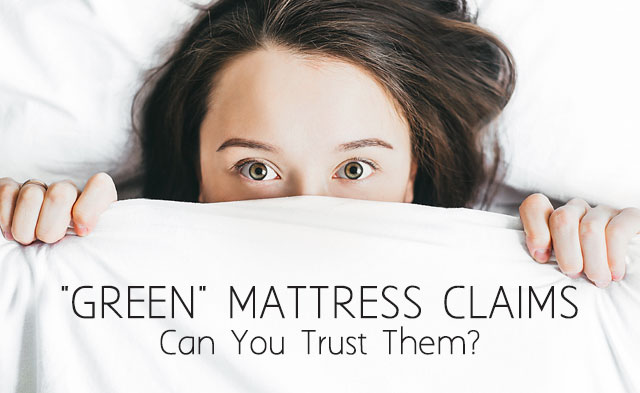The pressure to provide environmentally friendly and sustainable mattresses continues to increase. Many mattress manufacturers now use labels like “green”, “natural”, or “organic,” but those labels don’t always mean what you might think. You can’t rely solely on labels. Materials and certifications are a better indication of the safety, sustainability, and environmental impact of the mattress.
Labels Can Be Misleading
To appeal and appease those with environmental concerns, mattress manufacturers often use labels to advertise an organic or naturally produced product. However, there’s no governing organization or body within the mattress industry to provide standards or regulate “green” mattress claims.
A label that says “eco-friendly” could indicate that the raw materials used in the mattress were grown organically or it may mean that one step of the manufacturing process used environmentally friendly methods. The claims on the label do not usually apply to an entire mattress because a true, 100 percent green mattress doesn’t exist at this time.
Finding an Environmentally Friendly Mattress
There are materials and processes you can look for to help you find a green option that has a small environmental impact, is socially responsible, and biodegradable. You can look for natural and/or organic materials in the mattress cover, comfort layers, and support core. Materials to watch for include:
-
Natural Latex: Natural latex is made from the sap of the rubber tree making it sustainable and environmentally friendly. The latex does have to go through a manufacturing process wherein it is mixed with anywhere from five to forty percent synthetic latex, which is derived from petrochemicals. The higher the percentage of natural latex the more biodegradable and eco-friendly the mattress.
-
Plant-Based Polyfoam and Memory Foam: Plant-derived oils replace chemicals to make plant-based foams. They help to eliminate odors and exposure to chemicals.
-
Organic Fibers in the Cover and Fire Sock: Mattresses have to meet flame resistant standards. Traditionally, and some manufacturers still do, that meant treating the cover with chemical flame retardants that emitted harmful gases and increased exposure to chemicals. The use of organic cotton and wool fibers in covers has led to the use of fire socks in eco-friendly models. Fire socks should also have organic materials like wool, cotton, thistle, or Kevlar, which doesn’t go through any chemical treatments during manufacturing.
Check for Certifications
While there’s no governing body to check the mattress industry for eco-friendly claims, there are independent organizations in the United States and abroad which monitor aspects of the manufacturing process. Some certifications that monitor human health factors include:
-
OEKO-TEX Standard 100: This certification comes from a group of 18 independent research and testing institutes in Europe and Japan. They test to make sure the mattress does not pose a human health risk through chemical emissions.
-
CertiPUR-US: CertiPUR-US tests for chemical emissions in the foam used in mattress layers.
-
Eco-Institut: A German-based organization gives this certification after evaluating textiles and materials for harmful chemical emissions and substances. They most often evaluate latex mattresses.
A few environmental impact certifications to watch for include:
-
Global Organic Textile Standard (GOTS): The GOTS certification monitors both the raw and derivative products of organic fibers. To receive this certification a mattress must be made with 70 percent certified organic materials.
-
Global Organic Latex Standards (GOLS): To receive the GOLS certification a latex mattress must be made with 95 percent organically produced latex.
-
Cradle to Cradle: This certification means that the organic materials used in the mattress have been monitored for sustainability issues like carbon emissions, water conservation, and ecological impact.
-
Global Recycled Standard: The Textile Exchange gives this certification to products or materials that have been produced using environmentally friendly and sustainable methods.
CONTRIBUTION CREDIT:
Ellie Porter, Managing Editor at SleepHelp.org

